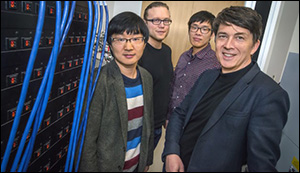New Path Forward for Next-Generation Lithium-Ion Batteries
1. 6. 2016 | Berkeley Lab | newscenter.lbl.gov
In the quest for a radically better lithium-ion battery, a promising direction is the so-called “lithium-rich” cathode, in which the cathode contains a higher proportion of lithium than normal. While it has the potential to have far higher energy density, scientists have lacked a clear picture of the chemical processes, especially the role of oxygen.
Now researchers at the Department of Energy’s (DOE) Lawrence Berkeley National Laboratory (Berkeley Lab) report a major advance in understanding how oxygen oxidation creates extra capacity in such cathodes, opening the door to batteries with far higher energy density, meaning your phone or electric vehicle will be able to run for much longer between charges.

In a conventional lithium-ion battery, the cathode material is a lithium transition metal oxide, with the content of the lithium and the transition metal, such as nickel or cobalt, balanced. In a lithium-rich (also called lithium-excess) cathode, there is a higher proportion of lithium than the transition metal. Because transition metals are heavy and also expensive, reducing its content is a big benefit. The battery can be significantly cheaper and lighter, which are especially important factors for vehicle applications, where the battery is often one of the heaviest components of the vehicle.
Read more at Berkeley Lab
Image Credit: Berkeley Lab
-jk-




